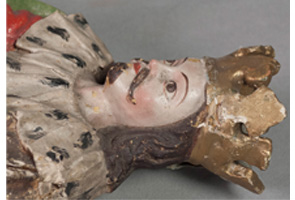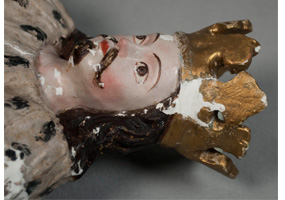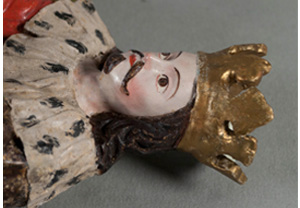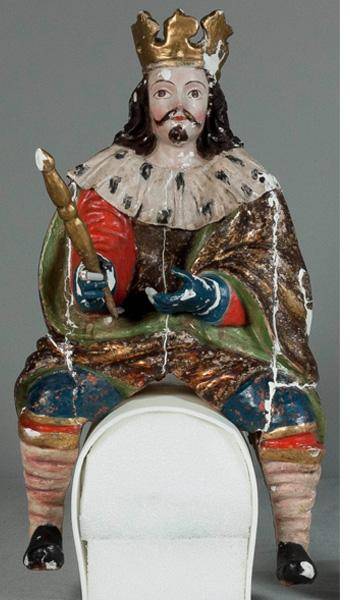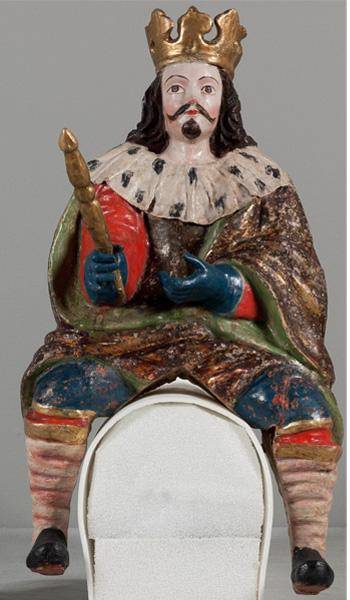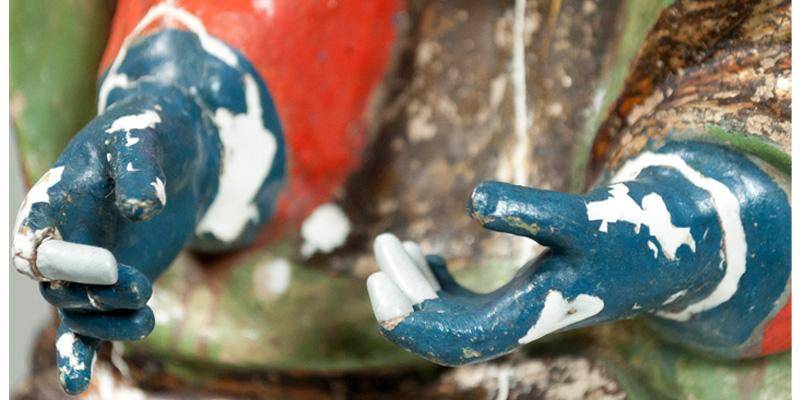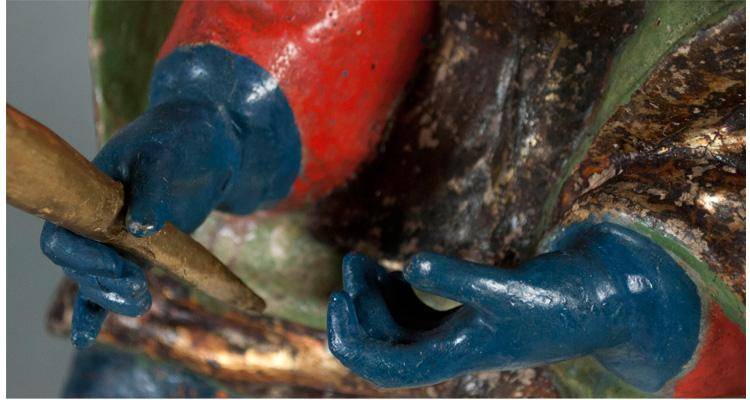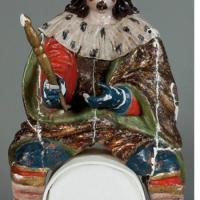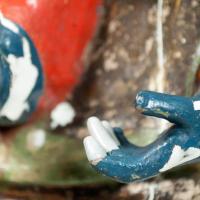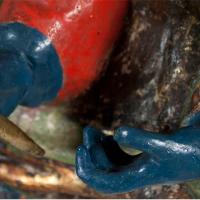Conservation treatment of King Caspar is almost finished. Having completed the structural portion of the treatment which included filling cracks, repairing broken elements, and stabilizing loose joints, I moved on to the aesthetic portion of the treatment. The goal of this part of the treatment was to unify the overall appearance by filling areas where the paint and/or gesso was lost to bring them to the same level as the surrounding surfaces.
First, the missing fingers. Using the existing fingers as a guide, I formed Caspar’s four missing fingers out of a two-part epoxy putty; each finger was individually adhered after it dried. Then, I began the process of filling the losses to the paint and gesso.
An isolating layer consisting of a synthetic adhesive was brushed onto each loss. The purpose of the isolating layer is to protect the original surface and to ensure that the fills can be removed, or ‘reversed,' if necessary in the future. This is in keeping with the ethical Guidelines for Practice of the American Institute for Conservation of Historic and Artistic Works (AIC). A calcium carbonate-based fill material was then carefully applied to each loss, gently shaped, and smoothed. Nearly 100 losses to the structure and paint stratigraphy were filled using this method.
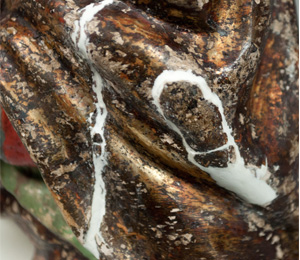
Finally, I painted each fill to match the surrounding original surface. I took great care to paint only the surface of my fill and not to obscure or modify any of the original surfaces (another guideline of the AIC). Here is a series of images illustrating how the left side of the face and crown appeared before, during, and after treatment:
Additional comparison images can be found in the slide show below.
Conservation treatment of King Caspar will not be considered truly complete until all six sculptures in the group are complete. Since they are to be displayed as a group, it is important that the aesthetic of each sculpture is consistent with the group as a whole. It’s likely that I will make slight adjustments to my fills and inpainting on King Caspar as I conserve the other two Kings: Balthasar and Melchior.
All three Kings and their respective horses will be displayed as a group in the next year, hopefully in time for the Christmas season.
Headline image credit: Sculpture of a Man (King Caspar), c. mid-eighteenth century, Ecuador. Polychrome wood. Denver Art Museum: Gift of the Stapleton Foundation of Latin American Colonial Art, made possible by the Renchard Family, S-0360.
